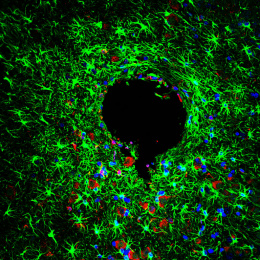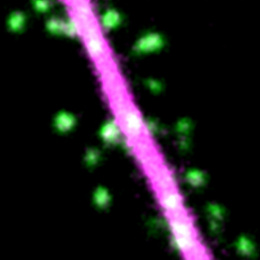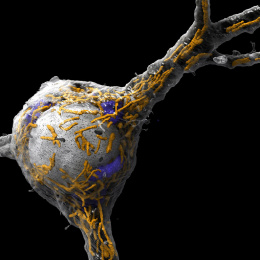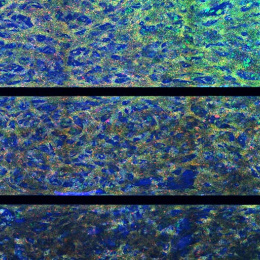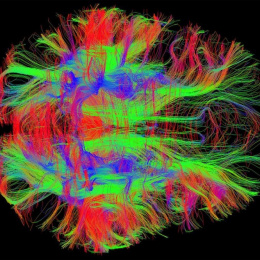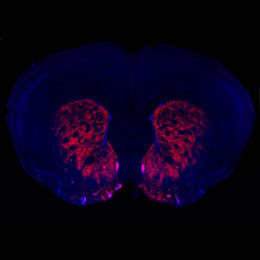Examining the Interplay Between Active and Passive Transport in Axons
Examining the Interplay Between Active and Passive Transport in Axons
Corban Swain
MIT Media Lab
Your body is made up cells; cells that perform specific functions—like intestinal cells that absorb nutrients from food and retinal cells that sense light and allow you to see. Most types of cells are relatively round in shape; however, neurons, the cells that make up your brain and allow you to send signals to move your muscles, can be very, very long and skinny. In fact, there is a single neuronal cell that extends from the bottom of your back all the way down your leg to your pinky toe.
Although having a single long cell is good for sending electrical signals quickly, it presents a problem for the distribution of nutrients efficiently. For the cell to transport nutrients and communication molecules the long distance from one end of the cell to the other it relies on a process called active transport. In this process molecular “railroad tracks” called microtubules, molecular “engines” called dyneins, and molecular shipping crates” called vesicles work together to move cargo from one end of the cell to another. This image shows a simulation of the movement of 100 vesicles moving both passively (indicated by the thin jagged lines) and actively along microtubules by dyneins (indicated by the thick smooth lines) with in a snaking axon. The color indicates the time of vesicles at each position, starting with dark purple (0 seconds) and going to red (40 seconds). Notice how vesicles that never get actively transported remain stuck, slowly and aimlessly moving, at one end of the axon; this is why problems with active transport can lead to neurodegenerative diseases like Alzheimer’s, Parkinson’s and ALS.

